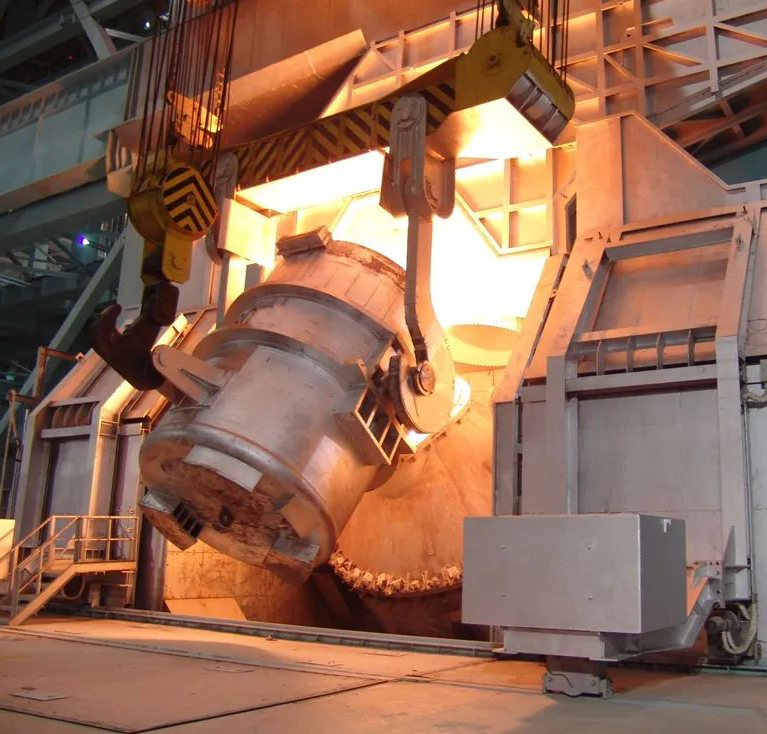Heyuan Xinlong Industrial Group Co., Ltd. owns two 40-ton AOD converters, which have been approved by the environmental supervision department. The AOD converter is an external refining technology that utilizes a mixture of argon and oxygen gas to refine stainless steel. In this process, the molten steel obtained from the electric arc furnace is poured into the AOD, where a certain ratio of argon-oxygen mixture is blown into the furnace from the lower sidewall. Decarburization occurs at the surface of the O2-Ar bubbles. The dilution effect of argon on the generated CO lowers the CO partial pressure within the O2-Ar bubbles, which promotes decarburization and prevents chromium oxidation. As the ratio of argon-oxygen mixture blown into the furnace increases, stainless steel refining can be achieved under quasi-vacuum conditions.
The AOD process for refining stainless steel has the following advantages:
Compared to the VOD process for refining stainless steel, the AOD process requires lower equipment investment, easier maintenance, and simpler operation. The process is easy to master, allowing the smooth refining of ultra-low carbon stainless steel using low-cost raw materials such as scrap steel and high-carbon ferrochrome. It can produce ultra-low sulfur stainless steel, and the steel quality can rival that of vacuum-treated molten steel. The total recovery rate of chromium can be improved, reaching up to 98%, and nitrogen alloying can be used, resulting in lower production costs.
Since its introduction, this equipment has been eagerly adopted worldwide, with approximately 80% of the global stainless steel production currently produced by AOD converters. AOD equipment mainly consists of the furnace body, trunnion ring, tilting mechanism, gas mixing and blowing system, and temperature measurement and sampling system. The furnace includes the furnace shell and the furnace cover. The lower side wall of the furnace shell is inclined at an angle of about 20° to the centerline of the furnace body, which helps the blown gas rise along the side wall to the furnace opening and reduces severe erosion of the upper area of the tuyeres. The furnace cover can be shaped in three forms: jaw type, asymmetrical, and symmetrical, but the symmetrical shape is currently the most commonly used. This not only improves the operator's observation of the interior of the furnace but also simplifies the construction process of the furnace top, changing the previous method of using castable materials to brick masonry. An important technological advancement of the AOD converter is the adaptation of the top-blown oxygen experience from the converter, leading to the development of the top-bottom composite blowing method. During the decarburization phase in the AOD converter, the top-bottom blowing method can accelerate the decarburization and heating of molten steel, thus shortening the smelting time.


